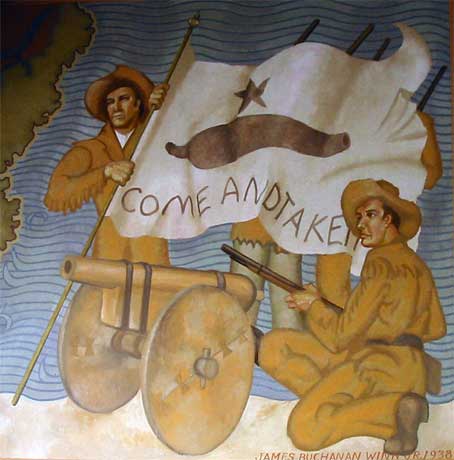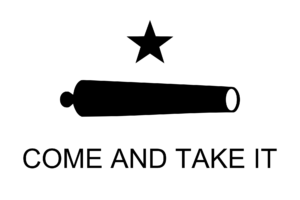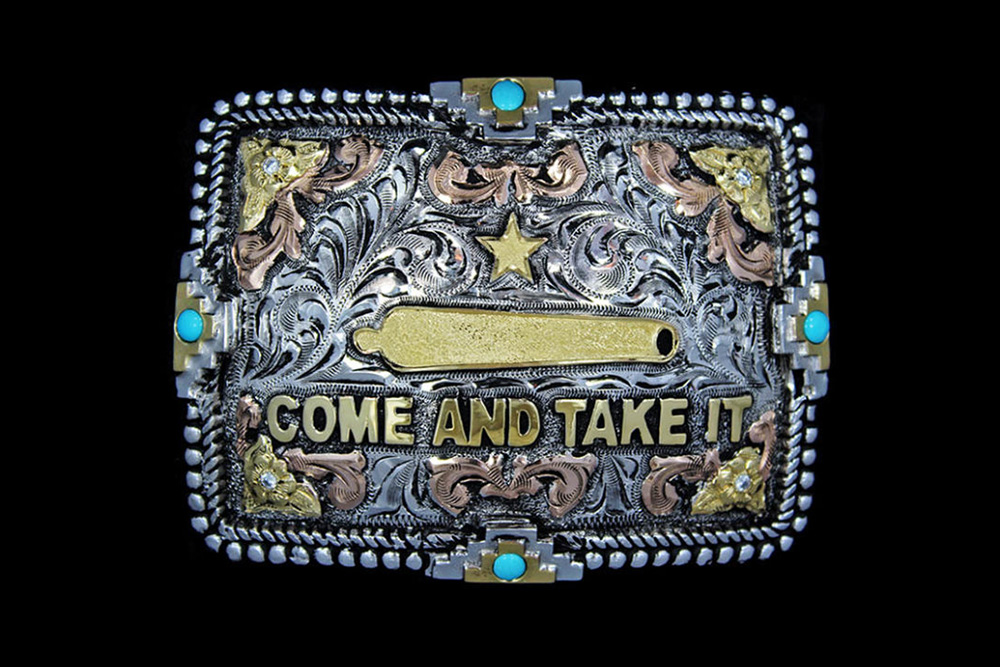Since 1836, Texas Independence Day has been celebrated on March 2nd. It was on this day, more than 180 years ago, that a document was signed by 60 delegates officially declaring Texas’ independence from Mexico.
The great state of Texas is home to many things, including Hyo Silver headquarters. Our lives and history are deeply rooted in Texas, and on this holiday we celebrate the unique history of our great state.
The people of Texas have embraced the “Come and Take It” message as part of our history. But we often wonder how many know its true meaning? You see it plastered on bumper stickers, supported on t-shirts, mass produced on hats and koozies, and even tatted across our backs. It’s a hallmark of Texas pride. But why? We wanted to take the opportunity to tell you a bit more about what “Come and Take It” means and where it comes from.
The phrase “Come and Take It,” or in Greek “Molon Labe,” is actually credited to King Leonidas in 480 BC. In the Battle of Thermopylae, King Leonidas of Sparta spoke those words to Xerxes of Persia. It was a strong king’s defiant response to a ruler’s demand for surrender.

But as Texans, we rarely think about Greeks and Persians when we hear this phrase. On October 2, 1835, the Battle of Gonzales was fought between Texan settlers and a group of soldiers from the Mexican army near Gonzales, Texas. This battle was the beginning of a rebellion—and the start of what would become the Texas Revolution.
Remembering Our History…
When settlers came to Gonzales, Mexican authorities decided to give them a small brass cannon for protection. This relationship, however, ultimately deteriorated and the commander of the Mexican troops thought it was unwise to leave these rebellious settlers with such a weapon. A Mexican commander demanded the return of the cannon. But the Texas settlers refused. Obviously, this upset the Mexican commander and he sent 100 soldiers on horseback to Gonzales.
It’s been said that there were a variety of excuses used to keep the arriving soldiers at bay. The Texan settlers sent messages to nearby communities to rally support—determined not to give up the cannon. On October 1st, they voted to fight and approached the Mexican soldiers at their camp.
Historians suggest the battle was more of a skirmish—but it served as a turning point between the Mexicans and the colonists. It would be less than a year from this initial battle and Texas’ first-ever Independence Day.
Ultimately, the Mexican soldiers withdrew from Gonzales and the Texas settlers raised a homemade banner made from a woman’s wedding dress with an image of the cannon and a lone star painted on it and the words “Come and Take It.”

Today the phrase is a popular one—with marketers, activists, and even barbecue fans trying to co-opt it and make it their own. (We do support the “Come and Brisket” movement, of course.) But “Come and Take It” is really a bit sacred and should be honored for its place in history, especially Texas history. It deserves to be remembered on March 2nd as a cry of independence and a celebration of freedom—and of all things Texas. As true Texans, we embrace “Come and Take It” as an integral part of our western heritage.
